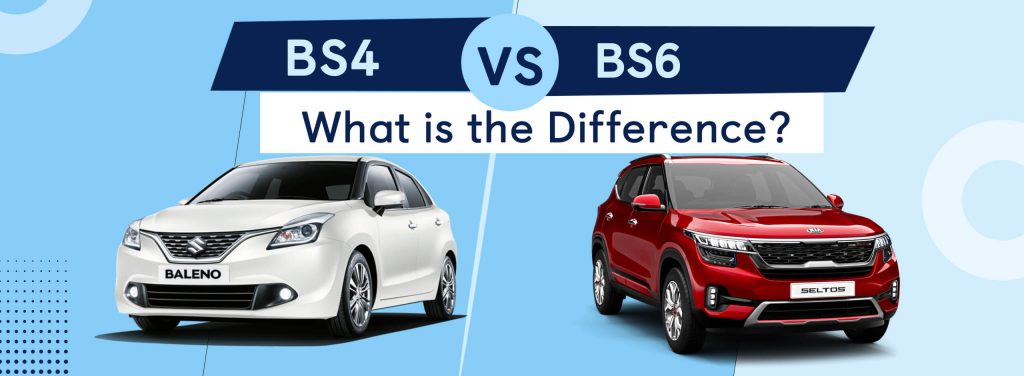Buy, sell and find just about anything using the app on your mobile.

Have you ever felt a little choked up after a long ride in heavy traffic? Vehicle emissions are a major source of air pollution, impacting everyone on the road. But there’s good news for eco-conscious riders!
Here’s a breakdown of the two main players: BS4 and BS6 emission standards. Think of them as guidelines for how clean your two-wheeler’s or four-wheeler’s breath needs to be. For an eco-conscious ride, it is crucial to understand the differences between BS4 and BS6
The bottom line? BS6 is all about cleaner air for you, your fellow riders, and the environment. It’s a win-win for everyone, making your ride and our cities a breath of fresh air!
The BSIV regulations introduced changes to tailpipe emissions, Electronic Control Units (ECUs), ignition controls, and more. The most visible change was the Automatic Headlamp On (AHO) standard, which aligned with BS4 and addressed safety concerns under the new emission norms.
The sixth generation of the emission standard, referred to as BS6, offers an important advance over the previous BS4 emission standard in terms of reducing air pollution. This is also a result of the BS5 (BSV) being removed in an attempt to move towards more advanced emission standards.

BS6 regulations are a stricter upgrade to BS4 standards, significantly reducing vehicle emissions. Here’s a breakdown of the key differences:
| Fuel Type | Gases release | BS4 | BS6 |
| Diesel | Nitrogen Oxide | 250 mg | 80 mg |
| Hydrogen Carbons and Nitrogen Oxide | 300 mg/km | 170 mg/km | |
| Particulate Matter | 25 mg | 4.5 mg/km | |
| Petrol | Nitrogen Oxide | 80 mg | 60 mg |
| Particulate Matter | – | 4.5 mg/km |
Compared to BS4, BS6 regulations significantly tighten restrictions on vehicle emissions. Diesel car emissions are drastically reduced, with BS6 allowing only 80 mg/km compared to the much higher 250 mg/km permitted under BS4. This represents a whopping 68% decrease! BS6 also applies stricter limits to other pollutants.
Particulate matter (PM) is capped at a mere 4.5 mg/km, down from 25 mg/km in BS4. Additionally, the combined limit for hydrocarbons (HC) and nitrogen oxides (NOx) is reduced from 300 mg/km to 170 mg/km. These substantial reductions translate to cleaner air and a healthier environment.
The shift to BS6 emission standards has a minor impact on CNG (Compressed Natural Gas) cars. Here’s a breakdown:
If you own a gasoline-powered BS4 car with fuel injection, you can breathe easily!
BS4 and BS6 gasoline are very similar, so your car will still run fine with BS6 fuel. However, things are a bit different for BS4 diesel vehicles.
Here’s the issue: BS4 diesel fuel contains more sulphur (50 parts per million) compared to BS6 fuel (10 parts per million). While this lower sulphur content is good for the environment, it can cause problems for BS4 diesel engines.

Takeaways on Differences Between BS4 and BS6
The primary change brought about by the adoption of Bharat Stage VI emission standards is a shift in the fuel used in automobiles. A car with an engine that complies with BS6 criteria needs BS6 fuel.
By adopting pollution emission norms, the government has made the right choice to reduce pollution for environmental safety. Individuals who own gasoline-powered vehicles with BS4 engines don’t need to worry. You can utilize BS6 petrol in these automobiles. The fuel’s hardly noticeable changes to its chemical composition are the cause. The simple response is that automobiles with BS6 engines won’t be distributed after April 2020. The manufacturers are being requested to cease producing BS6 vehicles, as it relates to them. Never forget that improper and incomplete combustion results in a changed fuel flow pattern, which increases the emission level. Thus, upgrade yourself as well.
BS6 fuel has a lower sulfur content (10 ppm) compared to BS4 fuel (50 ppm). The lower sulfur content is necessary for the advanced emission control systems in BS6 vehicles to function correctly.
Not necessarily. BS6 mileage can be better, worse, or the same compared to BS4 for a few reasons:
The sulphur content in BS6 fuel is 10 parts per million, a fivefold reduction from the 50 parts per million in BS4 fuel. As a result, BS6 gasoline is more environmentally friendly than BS4. It lessens emissions of hazardous pollutants and has a lower sulfur content.
Look at the Vehicle Identification Number (VIN), Production Date, and RTO Form 21, you may determine if your vehicle complies with the BS4 and BS6.
No, since April 1st, 2020, only the sale and registration of new BS6 vehicles are allowed in India.